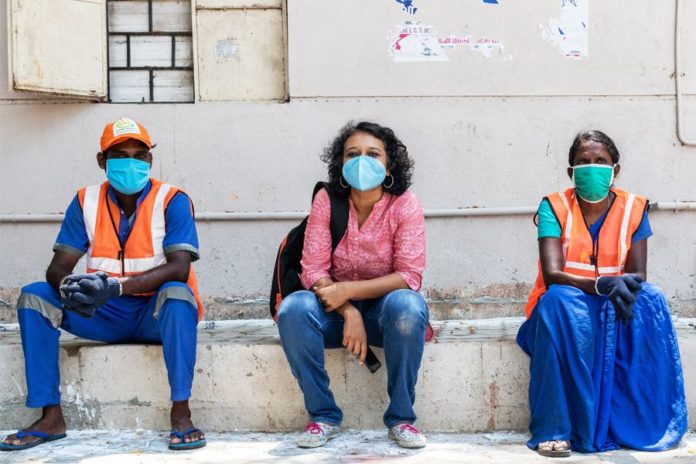
A number of crowdfunded and community-based initiatives has come forward to combat the social and economic fallouts of the Covid-19 outbreak
It all started with a Facebook post. On March 16, as social distancing was being advised to contain the spread of Covid-19 in India, freelance digital marketer Mahita Nagaraj put up a message on her wall, asking whether her friends who stayed overseas would like her to check in on their near and dear ones, especially the elderly, in Bengaluru. The response was overwhelming—the post was shared and re-shared, and requests poured in from those asking for help as well as those volunteering it. Within 24 hours, the post snowballed into a Facebook community, Caremongers India, as 200 members joined it from across the country; the number rose to 3,500 in the next three days.
On March 20, Nagaraj acquired a new mobile number to operate as a helpline for Caremongers India. “I was naive enough to believe I could handle operations on my own. Once the phone number was given out, 800 to 900 calls started coming in a day,” says the 38-year-old single mother. But even then, the community was just beginning to grow. The explosion happened after the national lockdown was announced on March 24. “About 80 percent of the help requests we got were from senior citizens. They were the most affected by the lockdown, because of their reliance on outside help, be it their maid, driver etc. Now, in under a month, I don’t think there is a single state in the country from which we haven’t received a request,” says Nagaraj.
While some Caremongers offer physical assistance by running errands—like delivering medicines to an HIV patient in Noida, or food to a post-operative patient in a Bengaluru hospital after its in-house catering unit shut down overnight due to the lockdown—some others help out in spirit by offering contacts and even calling up to check in on members through the period of isolation.
.jpg)
Mahita Nagaraj, founder of Caremongers India, started a community-based altruistic initiative to help citizens, especially the elderly, who are affected by the lockdownImage: Renjen Pavithran
“We are so touched by what these youngsters are doing in times of need,” says Anju Chopra, a retired advertising professional from Kolkata. Chopra, 65, is recovering from a fractured femur, while her 71-year-old husband is diabetic. Caremongers allocated an IT analyst to help them out with the supply of their weekly groceries and provisions. “One day we were running out of money. I gave him a cheque and told him it might take over two days to get encashed. He just got us the cash the next day, no questions asked,” adds Chopra.
Nagaraj borrowed the concept of ‘caremongering’ from a BBC article about the trend in Canada, where community-based altruistic initiatives have seen a spurt in the wake of the pandemic. A play on the word ‘scaremongering’, while being antithetical in its essence, fitted the motto of the group: Of building solidarity. That it would escalate into a pan-India movement with over 32,000 volunteers by the second week of April is something she considers almost a quirk of fate.
While the Covid-19 outbreak has turned out to be as big a humanitarian crisis as it has been of public health, it has also seen a surge of crowdfunded and community-based initiatives to fight the economic and social fallouts of the pandemic. The national lockdown has mandated that most of the people across the country should stay indoors, but a few communities and volunteers have been selflessly stepping out, risking their own health to mitigate the suffering of the most vulnerable sections.

Be it running community kitchens for destitutes or migrant labourers who find themselves stranded as businesses wind down for the month or longer, supplying rations to the underprivileged, looking after abandoned pets and strays, or raising funds to organise personal protective equipment (PPE) kits for frontline health care professionals, civil society has stepped forward to stem the downward spiral.
Sociologist Dipankar Gupta believes that more people coming forward to help others indicates an increasing collective awareness that, in the absence of immediate government help, people will have to start doing whatever they can in their own capacities. “A pandemic like this reflects the true essence of people in many ways,” he says.
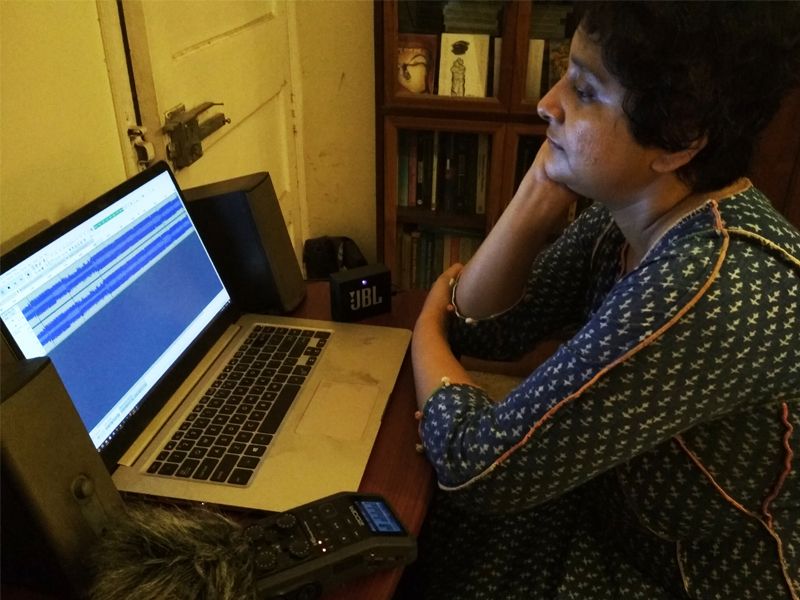
Activist-filmmaker Kasturi Basu and her friends run Radio Quarantine Kolkata from their respective homes, fostering connectedness and cameraderie over airwaves
Consider that in the five weeks that crowdfunding platform Milaap opened up its channels for Covid-19 focussed fundraisers, over 68,000 donors have collectively contributed nearly `72 crore across 900 campaigns (as of April 13) initiated as much by NGOs and corporates as by individuals.
“Whenever there is a natural disaster or something that impacts livelihoods, lives, or infrastructure for a lot of people, we notice a wave of collective endeavour by the public,” says Mayukh Choudhury, co-founder and CEO, Milaap. “The first time I saw this was during the Chennai floods in 2015, and it has been the same subsequently. Bigger the disaster, bigger the public response. We have built our capabilities based on this phenomenon.
”According to data research firm Statista, transactions across crowdfunding platforms in India are valued at $1.8 million as of 2020. The number of fundraising campaigns in India is expected to increase from approximately 16,000 in 2020 to 24,000 in 2023.
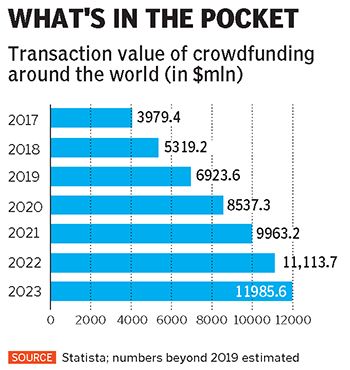
Infographics: Sameer Pawar
While Statista will take into consideration the specific impact of Covid-19 on the country’s crowdfunding segment only in Q2 2020, all the platforms Forbes India spoke to have dedicated fundraising pages and resources to handle the increasing number of people wanting to either run their own campaigns or donate to existing ones during the pandemic.
While platforms like Milaap and Ketto—where another 500-odd Covid-19 related fundraisers are in progress—have waived off the 5 percent fee they charge on the total amount raised, they also form credible intermediaries between multiple strata whose paths may not have crossed otherwise. For example, Ketto has helped Sujit Dilip, the proprietor of Rambo Circus, raise `8.5 lakh to feed his team of 90 artistes and a few animals, after they were forced to shut since March 13, when the Maharashtra government ordered a closure of malls, auditoriums, and theatres. “This will help us meet the basic expenses through this month. But if this crisis goes on for longer, it will drive us towards extinction,” says Sujit.
Crowdfunding has also enabled IIM-Bengaluru professor Shankar Venkatagiri and his teacher wife Sangitha Krishnamurti transform casual drawing room chatter into action and raise over `20 lakh to buy ventilators and PPE kits—the former crucial for critical patients and the latter comprising the first line of defence for health care workers—for St John’s National Academy of Health Services in Bengaluru. In under 24 hours of uploading their fundraiser on Ketto, the duo raised `5 lakh; in three weeks, they met their goal, and then some more.
“All we did was talk about it and push it just a little. My husband shared it on Facebook and LinkedIn, and I posted it on my fledgling Twitter account. Initially, we had some idea about who was donating—friends, their friends. But after `5-6 lakh, we didn’t even know; the campaign took on a life of its own,” says Krishnamurti. “The only reason I am talking to people about this initiative is I want to put it out there that it’s pretty easy to do something if someone tries. I find it very hard to ask people for money, so if I could do it, pretty much anyone can.”
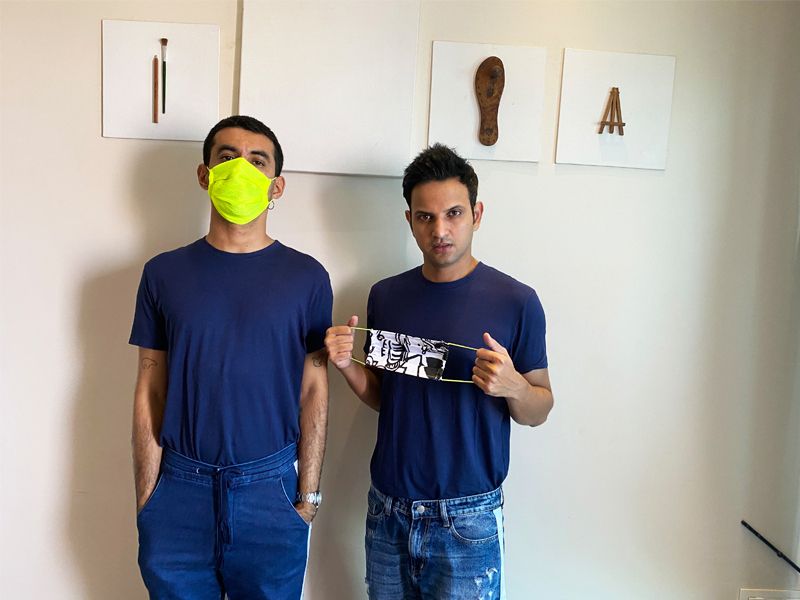
Karan Berry (left) and Leon Vaz of Karleo, a fashion brand from Mumbai, repurposed its export order for masks and delivered them instead to BMC for its high-risk workers like cleaners and sweepers
Help also streamed in once eight residents from Chennai’s Zone 13 (that stretches from RA Puram to Thiruvanmiyur along the coast) decided to raise some money to incentivise the locality’s conservancy workers who’ve maintained a near-complete attendance despite the lockdown. They launched their campaign on Milaap along with the Janta Curfew on March 22, when Prime Minister Narendra Modi implored citizens to applaud frontline workers by clapping or clanging utensils.
“We wanted to go one step beyond applauding and show our appreciation in a more tangible way,” says Archana Hari, a resident of Besant Nagar. “Most of these workers come from slum areas, are breadwinners, and earn barely enough to make ends meet in their families. We decided to raise some money for a direct benefit transfer so they have the agency to decide how to spend it.”
The campaign ended with nearly `22 lakh from about 618 donors, including a 93-year-old grandmother who goaded her entire building and her family in the US to contribute. The entire corpus was disbursed among 1,038 workers on April 14, on the day of the Tamil New Year. The next day, the local kids gave handmade ‘Thank You’ cards to the workers in their respective localities. “In our regular life, helping others or giving back takes a lower priority, which is normal. But when it comes to a crisis, we see those less gifted than us go through much tougher times. That pushes us to go beyond our routines to see how we can help those affected,” says Archana, who volunteers with a few non-profits.
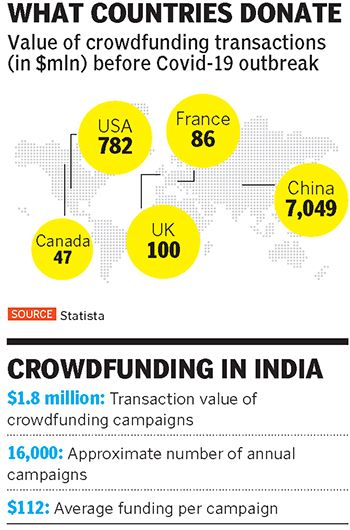
Pitching in to fight the pandemic isn’t merely about money, but also to ensure the social fabric isn’t ravaged by the crisis. Aching loneliness is a recurrent theme that transcends age groups and social classes through times of forced confinement. A group of 10 friends—film-makers, lawyers, journalists, urban history researchers, among them—from Kolkata, who were deeply involved in a number of socio-political movements before the lockdown, grasped the anxiety the isolation caused citizens when their own activities came to a grinding halt.
On March 24, as Modi announced the national shutdown, they launched a radio streaming service, Radio Quarantine Kolkata, to foster connectedness and camaraderie over airwaves. Hosted on free web-based platform ZenoRadio, RQK is a 24×7 station with a mix of pre-recorded and repeat programming, and ratcheted up over 5,000 listeners (3,820 among them unique) in nine days.
“We thought radio will be an appropriate medium to reach out, because, first of all, it’s fairly easy to set up a station even when each of us is working from our respective homes. Also, generating content for radio is not as big a hassle as trying to make video content. Creating audio content is as easy as recording this phone call,” says Kasturi Basu, documentary film-maker and a trenchant activist. “Besides, it’s a medium that makes people nostalgic as well as gives them a break from the constant attack of images.” The content, mostly in Bengali, is a veritable potpourri, ranging from children’s programmes (occasionally hosted by a teacher based in Norway) to current affairs and analysis, and is rounded off with a few hours of music that lasts till 2 am.

Basu is also part of the Public Monitoring Initiative, a loose network operating in West Bengal and beyond that caters to unorganised workers, stranded migrant workers and others who make distress calls for unpaid rations and wages. “We have access to the internet, phones and a network where some of us are IAS officers, or some of us know someone in the police or the administration, or are able to reach local NGOs or political parties. We make use of these tools to amplify cases and resolve them,” says Basu.
With about 700 volunteers operating through a Facebook group, Basu claims to have reached out to over 5,000 workers, bridging the information gap over their allowances and redressal mechanisms. “One of our biggest peeves is that the government should have disseminated information to these groups in the middle of this pandemic, but hasn’t. So we pick up the loose ends.”
Making government schemes work for citizens is a motto that drives Kuldeep Dantewadia, co-founder of Reap Benefit, a not-for-profit that enables citizens to solve problems in the local wards, neighbourhoods and communities of Bengaluru. In 2019, Reap Benefit was building a hyperlocal dashboard that would allow citizens to reach out to their local representatives and lobby with them to address pressing civic issues. Even as the team was prototyping it, Covid-19 invaded India, forcing Reap Benefit to transform into a database where people could crowdsource information about infection hotspots, availability of groceries, medical help etc.

Kuldeep Dantewadia, co-founder of Reap Benefit in Bengaluru, started a hyperlocal dashboard to address pressing civic issues and has now transformed it into a Covid-19 database
The dashboard now has over 65,000 data points and has impacted about 30,000 families. In the last nine days of March, it had between 13,000 and 15,000 views, of which a fourth were returning users.
“Over the mid-to-long-term, the dashboard will become a physical tool, acting like an assisted marketplace to the government and citizens. We are working on mapping all the `2 lakh crore-plus that have been allocated for schemes introduced by the state and the national governments. And we want to get the civil society and citizens together in helping the government deliver these schemes to the people who really need it,” says Dantewadia, who has already expanded it to eight cities.
It’s a similar sense of the greater good that prompted a turnaround for Karleo, a Mumbai-based fashion brand that specialises in bridal wear. It repurposed its mask export orders to the US, Italy and Lebanon and delivered them to the Brihanmumbai Municipal Corporation (BMC) instead. The civic body governing Mumbai then provided these masks to high-risk workers like cleaners and sweepers.
Karleo, whose parent company Elliven Exports clocks a turnover of `3.5-4 crore per annum, had already created the mask prototype in sync with export guidelines when the pandemic exploded in India, and it approached BMC with a proposal to deliver 5,000 non-medical masks free of cost. Stitched across five clusters in Mumbai—south Mumbai, Worli, Bombay Central, Mira Road and Jogeshwari—the company has deployed work-from-home women and daily wagers, seven to 10 in each cluster, who’ve lost employment due to the complete shutdown of business in the state.
“Our whole model is contactless. Once the masks are made, the women pack and seal them, and drop them in a basket in front of their house. We have deputed one person per cluster to pick them up and bring them to our office where we sanitise, iron, pack and hand them over to the BMC,” says designer Leon Vaz.
Like Karleo, the National Restaurant Association of India (NRAI), which represents over 5 lakh eateries in the country, is making use of its established infrastructure, its trained manpower and stocked-up essentials to serve meals to migrant workers and help halt reverse migration, which was the biggest worry faced by Vinay Pratap Singh, the municipal commissioner of Gurugram.
“We have been able to raise over `60 lakh, plus have received 6 tonnes of groceries [equivalent to nearly 13 lakh meals, valued at about `2 crore] from various NGOs, individual restaurateurs and housing societies,” says Amit Arora, the Delhi chapter head of NRAI, and founder of Buddy Group. The initiative, which has already served over a million meals, is commendable as the F&B industry has set aside worries over its own uncertain future and come together to ‘Feed the Needy’, as the campaign is called.
Brought up in the restive Punjab of the early 1980s, Arora isn’t a stranger to curfews or the template of cooking communal meals at restaurants; he has replicated the model in the NCR region, ensuring equitable disbursement of meals on either end of the social spectrum—tony neighbourhoods like Greater Kailash on one hand to far-flung areas like north-west Delhi or the Gurugram-Manesar Road on the other. In the initial days, the supply chain was broken in places but, Arora claims, the Delhi and Haryana governments have ironed out the details in the subsequent weeks. “The entire government machinery has been extremely helpful in making sure we get the vehicle passes, the personnel passes; even landlords have been helpful in enabling us to open up our kitchens during the lockdown period, with the right permissions of course,” says restaurateur Zorawar Kalra, who joined the initiative in anguish after watching thousands of migrants walk towards the Uttar Pradesh border on the Gurugram-Faridabad road. “We are in the business of feeding people and this is the best way we can give back.”
Like the novel coronavirus that knows no boundaries in who it infects, community initiatives too have bridged gaps to combat its perils. “The big divide [between the new, rich Gurugram and the old] has been broken. It’s heartening to see the city rise as a community as people from across socio-cultural milieus are organising over a lakh meals a day,” says Vivek Kalia, estate officer, Gurugram and the nodal officer for food distribution within the city during Covid-19.
Perhaps in it lies the outbreak’s biggest takeaway.With additional reporting by Mansvini Kaushik
Reference Link:
https://www.forbesindia.com/article/coronavirus/in-times-of-social-distancing-forming-communities/59025/1









